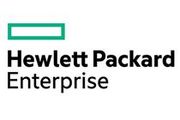Late Tuesday, Hewlett Packard Enterprise announced availability of the HPE Universal Internet of Things (IoT) platform, which enables the ability to add new functionality and benefits to users, acting as a driving force in building the infrastructure that enables the growth of IoT.
The HPE Universal IoT Platform is aligned with the oneM2M industry standard and is designed to be industry and vendor-agnostic, enabling IoT operators to simultaneously manage heterogeneous sets of sensors, operate vertical applications on machine-to-machine (M2M) devices, as well as process, analyze and monetize collected data in a single secure cloud platform.
The platform provides increased support for long range, low power connectivity, ensuring that LoRa and SIGFOX deployments can be supported alongside other connectivity protocols, including cellular, radio, Wi-Fi and Bluetooth. Currently globally available, the HPE Universal IoT Platform can be deployed on premises or in a private cloud environment for a comprehensive as-a-service model.
The HPE Universal IoT Platform architecture is aligned with the M2M industry standard and designed to be industry-, vertical-, and vendor-agnostic. This supports access to different southbound networks and technologies and various applications and processes from diverse application providers across multiple verticals on the northbound side. The HPE Universal IoT Platform enables industry-specific use cases to be supported on the same horizontal platform.
HPE enables IoT operators to build and capture new value from the proliferation of connected devices. Given its carrier-grade telco applications heritage, the solution is highly scalable and versatile. For example, platform components are already deployed to manage data from millions of electricity meters in Tokyo, and are being used by over 170 telcos globally to manage data acquisition and verification from telco networks and applications.
Alignment with the oneM2M standard and data model means there are already hundreds of use cases covering more than a dozen key verticals. These are natively supported by the HPE Universal IoT Platform when standards-based, largely adopted, or industry-vertical protocols are used by the connected devices to provide data. Where the protocol used by the device is not currently supported by the HPE Universal IoT Platform, it can be seamlessly added. This is a benefit of Network Interworking Proxy (NIP) technology, which facilitates rapid development/deployment of new protocol connectors, dramatically improving the agility of the HPE Universal IoT Platform against traditional platforms.
The HPE Universal IoT Platform provides agnostic support for smart ecosystems, which can be deployed on premises and also in any cloud environment for a comprehensive as-a-Service model. It supports different go-to-market, including on premises, sold with software perpetual licenses, operated by the customer in a data center operated by the customer, and from the cloud, sold as-a-Service, operated by HPE from a data center operated by HPE. For both go-to-market, the HPE Universal IoT Platform Software is offered following the same structure – a core baseline offering, inclusive of the required fundamentals modules/features to implement a oneM2M CSE, and a set of options, to complement the core baseline offering with an additional set of features, adding value for the customer or use cases in the need of such support.
With the Universal IoT Platform, users get multi connectivity communication over different types of underlying networks, to acquire IoT data and maintain it in a consistent data model aligned with the oneM2M standard; device management to offer standardized device lifecycle management (oneM2M) across disparate IoT gateways, devices and underlying networks; mashup feature that gives the ability to enrich data from the devices with external data sources, so developing contextual data that provides greater insight.
The platform also delivers application development environment for developers and partners; data analytics to discover meaningful patterns in data collected from sensors to derive valuable business insights using HPE Vertica and HPE Haven OnDemand; and boost data security that utilizes key exchanges and Codec libraries to interpret data flows in a secure manner.
Research firm Gartner said the “endpoints of IoT will grow at a 31.7 percent CAGR from 2013 through 2020, reaching an installed base of 20.8 billion units.” As the IoT market expands and organizations extend their networks to connect a range of devices, communications service providers and enterprises require horizontal solutions to connect and manage devices and applications, while meeting the scalability and versatility requirements of IoT operators.
“The value of the IoT lies in enriching data collected from devices with analytics and exposing it to applications that enable organizations to derive business value,” said Nigel Upton, director and general manager, IoT, Hewlett Packard Enterprise. “The HPE Universal IoT Platform dramatically simplifies integrating diverse devices with different communications protocols, enabling customers to realize tremendous benefits from their IoT data, and is designed to scale to billions of transactions tried and tested in rigorous large scale Global Telco and Enterprise environments in a variety of smart ecosystems.”




